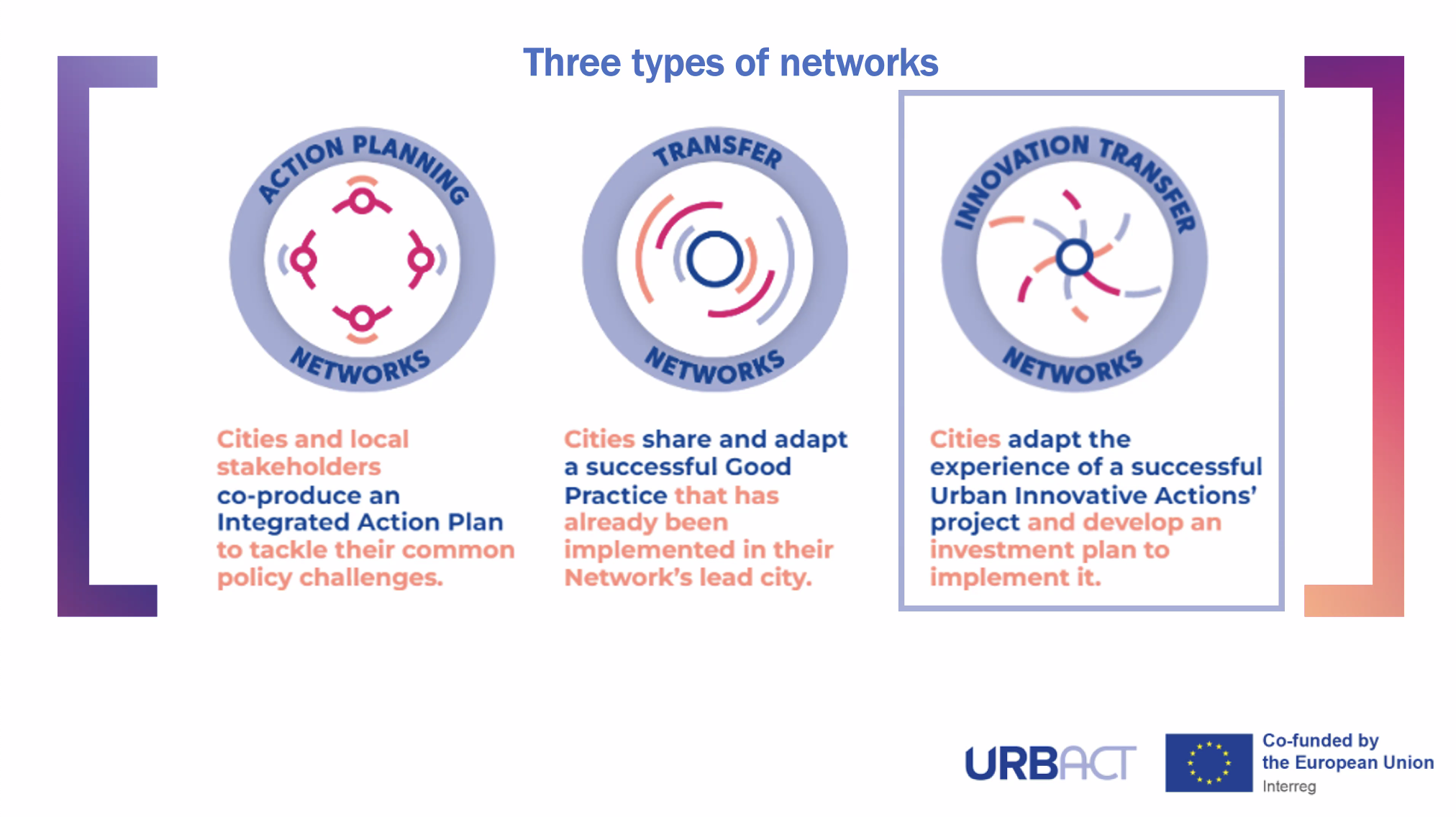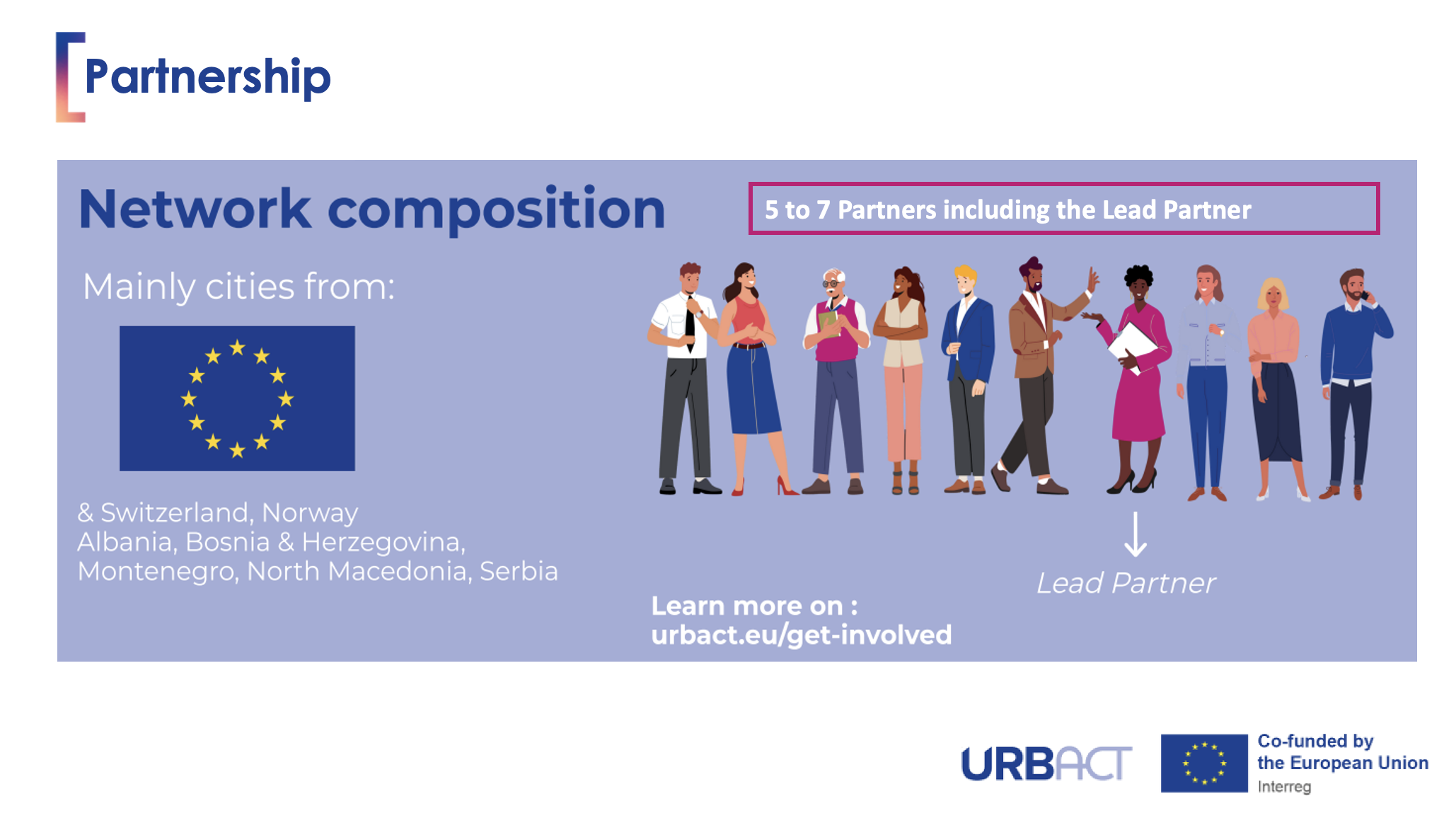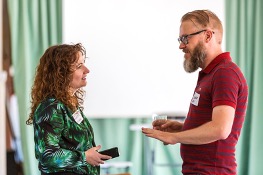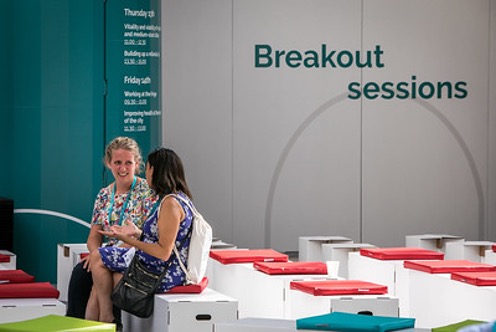Since 2002, URBACT Networks have been bringing European cities together to exchange and learn from each other and develop and test urban solutions.
Looking at past and upcoming opportunities, we’re presented with the age-old question: What makes a strong partnership? We’ve scanned through previous and existing URBACT Networks to extract general URBACT partnering tips, with specific reference to eligibility requirements for upcoming calls for URBACT Networks.
The URBACT Network experience
Stated simply, URBACT Networks are open to cities, metropolitan areas, districts, boroughs, and other public equivalent bodies, often lasting 2.5 years and involving partners from a host of different countries.
Last year’s round of calls was dedicated to Action Planning Networks; and a new round of applications will be opened before the end of the programme. The call for Innovation Transfer Networks is open until 20 March 2024 and a call for successful Good Practices will run from 15 April to 30 June 2024.

There’s something incredibly rewarding and motivating about connecting with colleagues from other cities across Europe focused on driving change. Looking at a few recent examples, urban sustainable mobility plans are being set up in Latvia, Lithuania, Croatia, Poland, Italy, Spain and Slovenia. Urban communities across Bulgaria, Hungary, Slovenia, Portugal, Spain, Italy, Ireland, Netherlands and Bosnia-Herzegovina are mending relationships between cities and nature. Other Networks have set out to understand why smaller cities are happier, employment access for urban youths, and more.
Get the latest insights from these Networks in thematic articles produced by the experts leading them!
Innovation Transfer: a new type of partnership
Unlike other types of URBACT Networks, the Lead Partners of Innovation Transfer Networks must have been involved in projects funded under the Urban Innovative Actions (UIA) initiative between 2016 and 2023.
Over 24 months, the city with an UIA project will transfer experience and know-how to other cities following three stages: Understand, Adapt, Prepare for re-use. A key output for each city involved will be a solid Investment Plan.

Additional information on this new call (including eligibility requirements) can be found in the Terms of Reference. We also prepared an article on Innovation Transfer Network project ideas found using the Partner Search Tool, along with a recording from our online info session on finding strong partnerships.
The evolution and transformation of URBACT Networks
Many cities have worked together through evolutions of URBACT Networks. It’s worth taking stock of this evolution by looking at examples from earlier Networks. These achievements are a testament to the URBACT Method – its ability to unite people and communities together – and the trust and team spirit developed amongst partners.
In the area of tech and the digital transition, Techtown and TechRevolution come to mind, along with a spin-off, the TechRevolution 2.0. Likewise, the original Action Planning Network PROCURE later turned into the Transfer Network Making Spend Matter. Both cases had many cities in common, including the same ones acting as Lead Partners.
In other cases, a specific theme was used as a common thread and as an occasion for cities to evolve and seek out new directions. This was the case of AGRI-URBAN a network in which many partners moved towards Horizon 2020 opportunities, while other partners developed an URBACT Transfer Network, the BioCanteens, counting with yet another spin-off, the BioCanteens 2. It is also worth mentioning that the Lead Partner of both BioCanteens Networks, Mouans-Sartoux a small French town, was originally a new-comer Project Partner in AGRI-URBAN.
Some towns went on to deliver the Erasmus PART-Y project around gender-sensitive youth services and participation. While a project partner from CREATIVE SPIRITS Implementation Networks has pursued its project with Urban Innovative Actions’ funds, the partners from the Re-growCity Transfer Network founded a brand new project with EuroTowns. More recently, some of the cities from the SibDev Action Planning Network had their bid for an Interreg Europe project approved.
Several (or parts of) Networks have gone on in the past to work together in different shapes and sizes both within and beyond URBACT; for instance, more than 30% of the URBACT III cities applied to Horizon 2020 after the end of their Networks. The original Electric Vehicles in Urban Europe Network went on to leverage the results into a multi-million euro demonstration project.

Before initiating your partner search, get a refresher on the following tried-and-tested tips for a strong, enduring partnership…
1. The more the merrier
There is no such thing as the “perfect size” of a partnership, but it’s better to choose more than the minimum number of partners. One partner might drop out at the very last minute or join another proposal, does not provide the signed Letter of Commitment on time, etc.
URBACT pro-tip: Once an URBACT Network is approved and activities get started, some partners can turn out to be less active than expected. Therefore, developing a partnership with a minimum number of partners is also risky should some of them turn out to be “sleeping partners”.
2. Trust the pitch
Trust is a key ingredient in any partnership. Once a potential partner has been identified, it’s important to consider, exactly, what they are looking for in a partnership. Is it money? Professional development? The chance to improve participative and integrated approaches? An opportunity to develop a plan that has more chance of securing EU and national funds?
Make sure that partners are applying to the right fund for the right reasons. Try to detect some potential red flags in candidate partners’ interest; for instance, if they:
- want to become an URBACT city with my topic, no matter what network;
- want to become an URBACT city although not equipped to actually handle the topic and make a difference at local level;
- are more interested in the budget than the policy challenge;
- are an ambitious politician with no commitment of wider municipality administration (incl. staff allowed to travel etc.);
- are an ambitious officer with no support from politicians who understand the importance of the project.
Another good indicator is the responsiveness of a potential partner at early stages. If they have to be chased for information and input, then maybe that’s not a good omen.

3. Strike a (geographical) balance
Across different URBACT Networks, successful partnerships have been formed with cities of different sizes, from different regional contexts, at different stages of development. In fact, the mutual learning does not go in a single direction, from “well-developed” to “less-developed” partners. There are always interesting insights to discover, through peer exchange and site visits, which promote reflection and innovative thinking. What matters is to clearly demonstrate the rationale of working in this formation, that the partners have a shared interest in the common challenge and have established this together before submitting the application.
Depending on the type of network, the eligibility requirements might change (so, always check the Terms of Reference for each call).
4. Check the (shared) directions
Beyond the number and location, aim for coherence and complementarity when it comes to partner needs, expectations and potential contributions.
Do not accept new partners on a “first come, first served” basis. Take time to speak with the relevant people in a candidate partner city before deciding on the final partnership list. Try to avoid cities who reach out through consultants – this can be an indication that the city does not have real interest and/or capacity to become committed and active partner.
From our experience a vital element of productive partnership is a genuine shared interest and need around a particular challenge, whether that be mobility, digital transition or something else. Each partner also needs to bring a commitment to truly engage with all elements of the URBACT Programme. That means full participation in all meetings, openness and honesty as well as willingness and enthusiasm to complete related tasks and support others. It means learning about the URBACT Method, building local capacity and integrating URBACT’s cross-cutting themes of digital, green and gender equality into policymaking
5. Be respectful
A little respect can go a long way when it comes to partnerships – whether it is shown by respecting deadlines or the Network’s proposed roadmap.
A partnership that is successful doesn’t cut corners. This means really thinking about how much time and effort will be involved over the 2.5-year timeframe. Can city partners commit the right kind of resource? Are they able to find the level of match funding? Can they allocate or hire the right staff to fulfil the local project roles? Do they have the finance team that can do the reporting on time and understand the audit control? Are they ready to set up and drive the local group and encourage local stakeholders to get involved at both local and transnational level?
6. Experience isn’t everything
Not all cities in Europe have had the opportunity to take part in an URBACT Network and experience the “URBACT learning journey”. Thus, URBACT’s guiding principle is to ensure participation of a maximum number of cities in URBACT Networks. URBACT is particularly seeking to support cities which are new to the programme, i.e. the city has not been a partner in URBACT II or III. It’s important to consider all these elements when selecting partners without sacrificing the quality and relevance of the project proposal.
7. Last but not least: take advantage of URBACT tools & resources
Unsure of where to find suitable candidates? The easy answer lies in URBACT’s Partner Search Tool. To make the most of this tool, you need to know what you are looking for…and that depends on the call.
Although the platform might ignite many exchanges and allow people to have first contact with others, we are aware that many partnerships are done offline. URBACT events – notably, EU City Labs and City Festivals – are a great way to get in touch with other cities and meet new peers. The next URBACT City Festival will take place in 8-10 April 2025 in a Polish city, and it will be the perfect occasion to find partners for the call for Transfer Networks (also opening in April 2025).
Another way to get an overview of other proposals and opportunities is to reach out to the National URBACT Points. They are basically the programme’s ambassadors, who represent URBACT and communicate about it on a regular basis using local languages. To further disseminate information about the call, they have been organising National Infodays both in-person and online, which cities are welcome to attend.
Interested in becoming a project partner in an Innovation Transfer Network? Find some useful links to the main documents (Terms of Reference, Guide for Applicants, Programme Manual) and call infographic here (under the ‘Documents’ section).
If you want to know more about the projects and partners of future Innovation Transfer Networks, read this article and watch our online info session on building a strong partnership in the context of the call for Innovation Transfer Networks. We also offer a host of other webinars and different materials.
In any case, the Joint Secretariat is here to help at itn@urbact.eu. Although it's not possible to provide an active matchmaking service, there are several resources to help along the application process.


